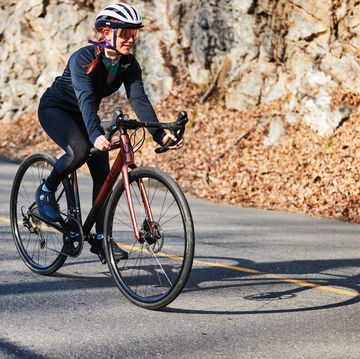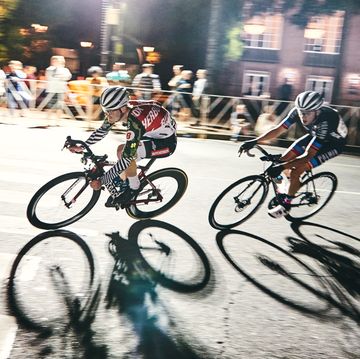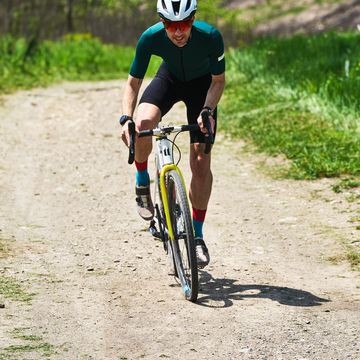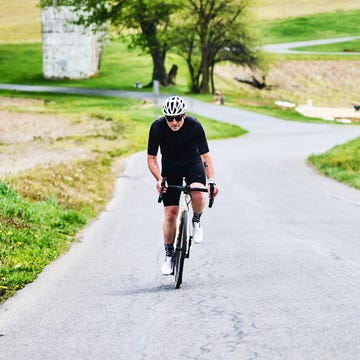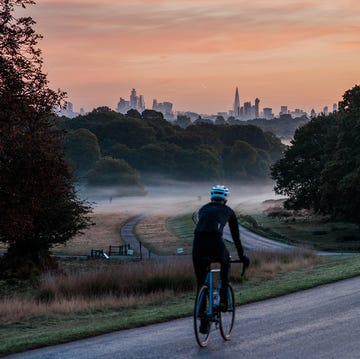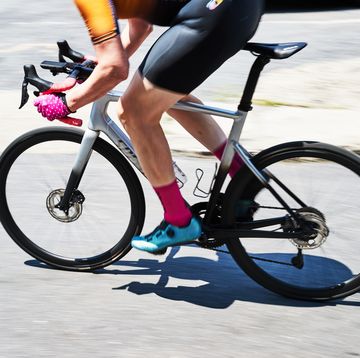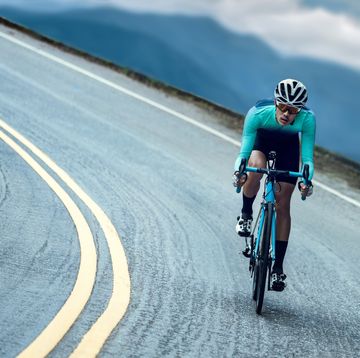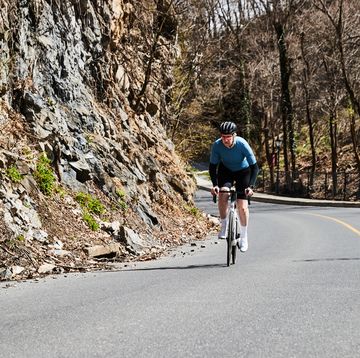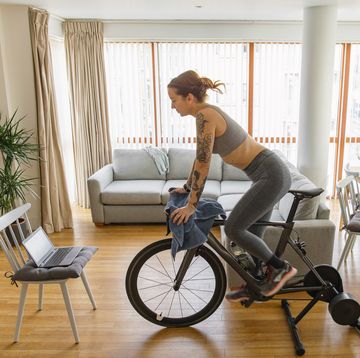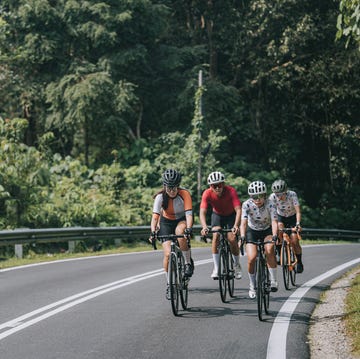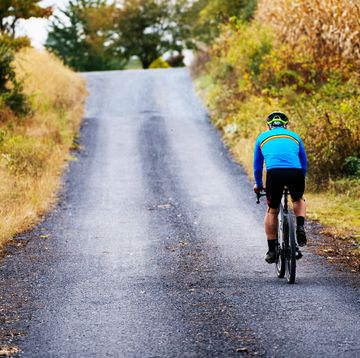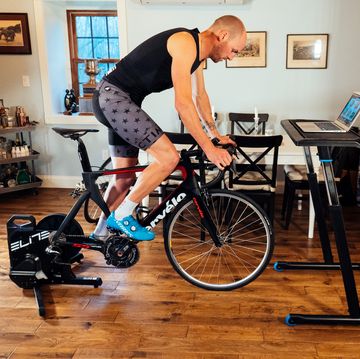Riding 10,000 miles in a year is no small feat for the amateur cyclist. If eking out a few lunch rides a week takes a toll on your schedule, clocking an average of nearly 200 miles weekly (roughly 27 miles a day) is an intimidating prospect—but it’s not impossible. We found five riders with families, jobs, and, yes, normal lives who have managed to make significant dents in their cycling computer's memory.
For fit cyclists with smart training, 10,000 miles a year isn’t out of reach. If you’re intrigued about working toward this brag-worthy goal, know that passion is essential—as is hard work. Follow these tips from riders who’ve been there to start the quest yourself.
Be Social
Going solo is tough. When no one holds you accountable, it’s easy to bail. Cycling buddies keep you honest about racking up the miles, and, after so much time in the saddle, tend to be your steadiest friends.
“When I say I’ll meet a friend, I’ll meet him,” says Melbourne, Australia-based Simon Matheson, who’s on track to cover more than 12,000 miles this year. “If he can’t do it, the impetus isn’t there to get out of bed.” Matheson, 47, rides with groups of 10 to 100 other riders nearly every day and finds the social aspect rewarding. “It’s the camaraderie, the catching up.”
Such camaraderie is part of the job for Matt Tanner, founder and promoter of the Indianapolis-area Rollfast Gran Fondo; more importantly, it fuels his passion. “In the Rollfast cycling club, our mission is to bring up the next generation of cyclists, discover kids that are interested in cycling, and develop them,” Tanner says. “I ride with a lot of kids that are 15, 16 years old. We’re goofing off. It makes you feel younger.”
Spencer Miller is one of those Rollfast kids. The 17-year-old has already logged over 11,000 miles this year and typically puts in up to 350 weekly miles, a good chunk of them on big group rides. “It’s an easier way to get miles in,” Miller says. “Not as lonely or boring.”
Be an Early Bird and a Weekend Warrior
Even with a horde of cycling pals, finding the sort of time necessary to average 200 miles a week feels improbable. How do these athletes balance work, school, and family life with hours in the saddle? The keys are efficiency and sacrifice.
"It's a lot of compartmentalizing time and the tasks I have to do,” says mountain biker Kurt Refsnider. The 34-year-old Prescott College geology professor and cycling coach has pedaled some 1,100 hours—or one-eighth of the year—in his best years. “It’s trying to not waste time on the Internet or watch TV: the typical time-sinks so many of us have and don't realize we have." Since winning the 2011 Tour Divide, Refsnider has attracted sponsors, and added blogging and distance-cycling consulting to his workload.
For architect and former triathlete Andy Johnson of Louisville, Colorado, 4am wake-ups are crucial—but it took him a year to adjust. “I have a family with two young kids, so I get up very early and get in two or two-and-a-half hours every morning,” Johnson says. “If I don’t, I probably won’t ride that day. It’s my time. It’s a lifestyle.” He expects at least 10,000 miles this year.
RELATED: 9 Ways to Make Riding in the Morning Easier
Most of these riders—like Miller, who hopes to turn pro one day—put in long rides on weekends, too, and Tanner always brings his bike on vacations. Refsnider, record holder for both the 300-mile and 750-mile iterations of the brutal Arizona Trail Race, would commonly put in 10- or 12-hour rides back to back on weekends, and went on weeklong, eight-hours-a-day training binges. It’s a matter of prioritizing for saddle time.
Make Goals
“You have to figure out why you’re riding a bike,” says Tanner, already at nearly 9,000 miles this year. "For me it's a competitive thing. I like knowing when I go to a ride that I'm in control of how fast we're going.”
For some of these guys, Strava KOMs make good goals. Maybe it’s getting stronger or faster, or simply staying fit. Miller even switched from regular high school to taking online classes, freeing him up to train, travel, and participate in cycling camps. All of them race or sign up for big events, like Matheson’s upcoming shot at the 100th anniversary of the 165-mile Melbourne to Warrnambool Cycling Classic, the world’s second-oldest single-day race.
RELATED: How to Get in the Mood to Kick Ass on Your Bike
Keeping your goals interesting is essential, too, Johnson says. “Next year, my buddy and I are going to Europe to ride two of the Classics—Flanders and Roubaix,” he says. “So it's a little bit of a bucket list thing.”
A good way to get to a place where you can crush 10,000 miles a year is by starting small, prioritizing good habits over impressive mileage with something like a ride streak. Use Bicycling's 21-Day #RideStreak Challenge plan for extra support.
Ditch the Wrappers
Proper nutrition is key to big miles, both on and off the bike.
“I try to eat healthy and, since I'm young, eat a lot,” explains Miller, who makes his own rice cakes for mid-ride snacks. “Whatever feels right.” Miller also posts protein-packed recipes on his website macro-chef.com, whose Instagram account has over 60,000 followers.
Tanner, too, takes homemade blueberry-and-chocolate-chip rice cakes on rides, or bags boiled red potatoes with salt. “Don’t eat things that come in packages,” he warns. “Eat real food, and eat ultra clean. Unless I’m doing 100 miles that day, I don’t eat much on the bike.”
Taking a little extra time to make food yourself is huge. Johnson makes his own energy drink of honey, salt, and lime—“If it’s all fast, I’m going liquid,” he notes—but always starts the day with a good breakfast and refuels after tough rides. “It just feels better to eat real food, especially when it's the first thing to go into my body after a workout. I'd rather have something that's going to burn clean."
And for recovery, Matheson swears by pea protein and magnesium powder to prevent muscle cramping.
Set a Training Plan—But Make It Fun
“Have a purpose,” Miller advises. “Whether it's an easy day, a hard day, or a fun ride with people, don’t just go out aimlessly doing miles."
Hiring a coach is a great move to maximize miles, train properly, shape goals, make sense of your numbers, and make it easier to trust the process. Miller’s coach structures his weekly rides and plugs him into the right races. The same day Matheson signed up for the Melbourne to Warrnambool Classic, he also hired a coach to eliminate strategic pressure. “That has given me a massive focus because I'm doing as I'm told," he says.
Join Bicycling All Access for more tips and tricks
Tanner often pulls two-a-day workouts, riding to and from group rides to nab extra miles, but he stresses the importance of balance. “I've met a number of pro cyclists , and I see how hard they train doing 30 hours a week,” he says. “That's their job. But if you're not having fun doing it and it's not your job, then you should back it off.”
Refsnider agrees. “If you're struggling mentally, you're not going to have an enjoyable experience. That's something that's always on my mind, just making sure I want to be riding."
“Cycling in general is a huge motivation for me,” Johnson explains. “I love the aesthetics of it, I love the fitness, I love all the different ways to ride and compete. I've got a full garage of bikes, and I ride every one of them. It's how we play as adults."



